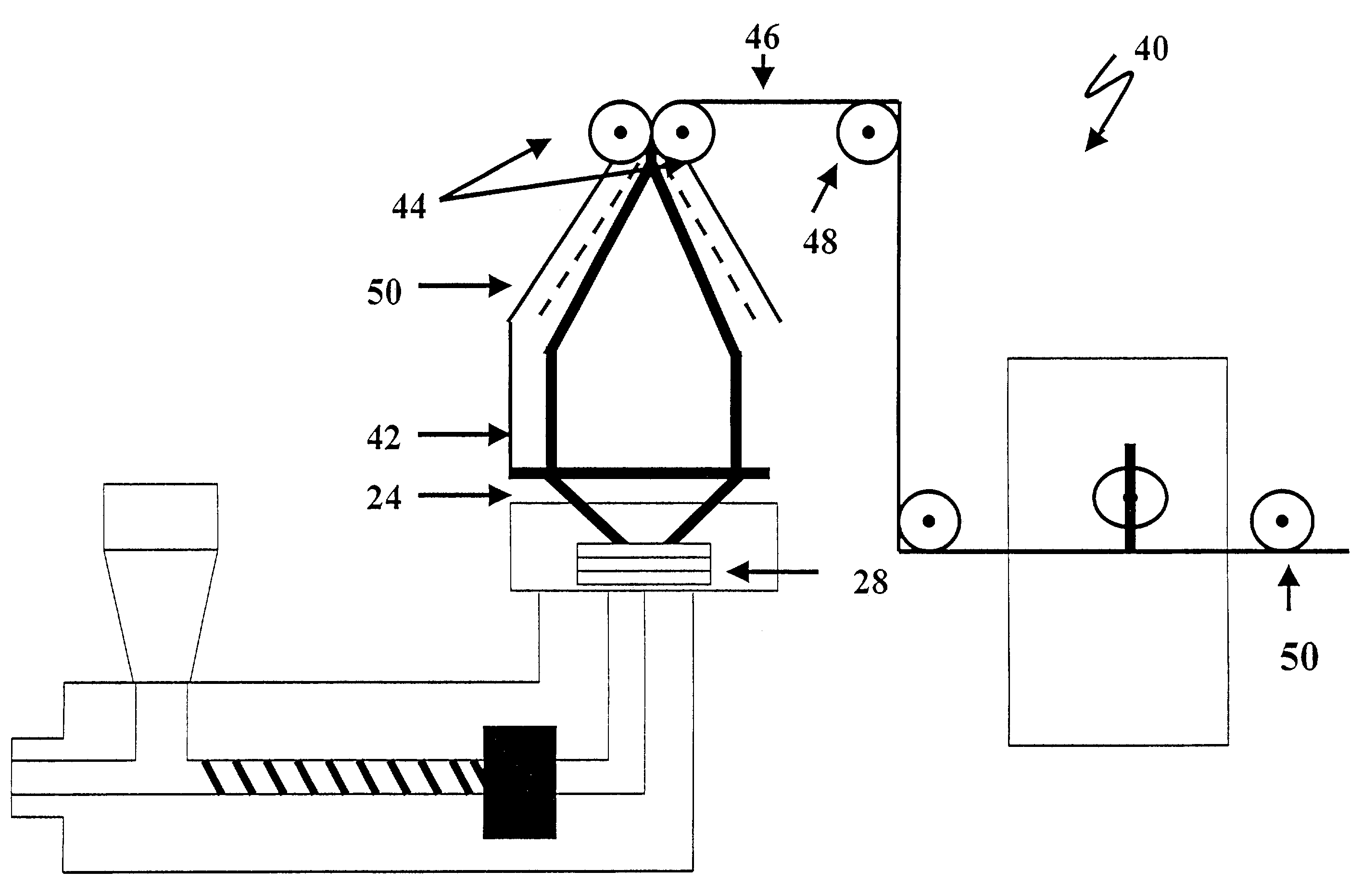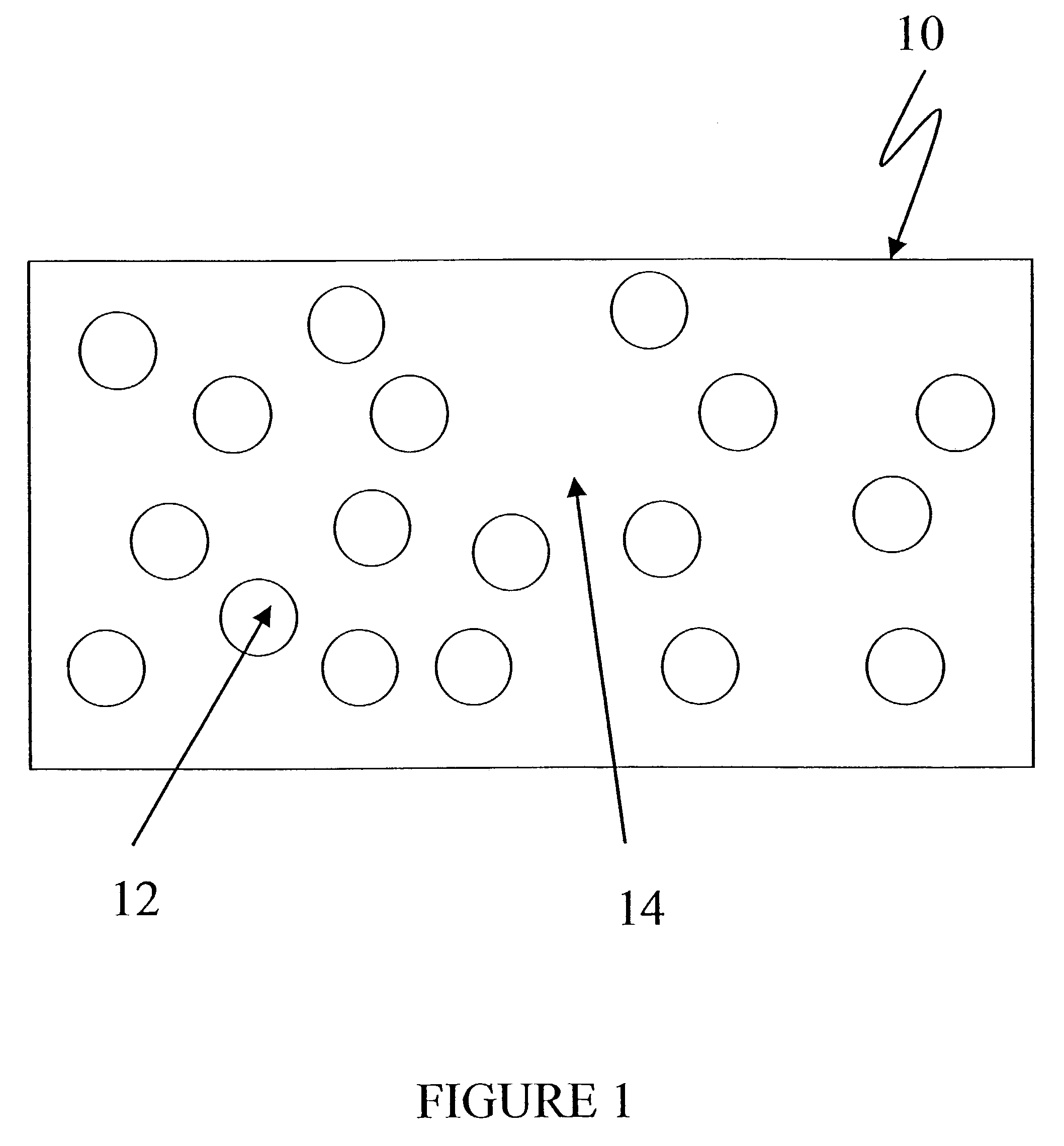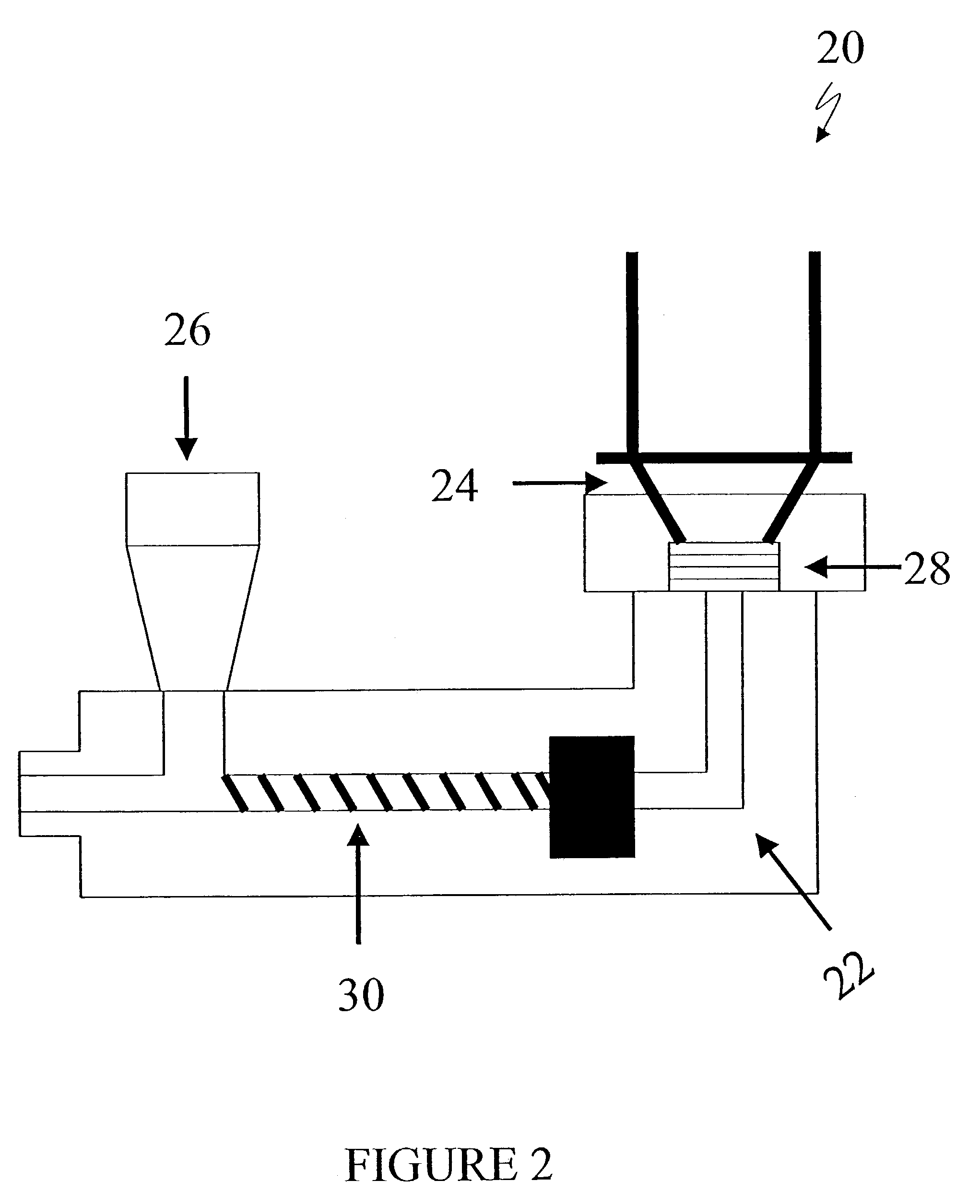Method of manufacturing foamed polyethylene films and related products
a technology of foamed polyethylene and polyethylene film, which is applied in the field of manufacturing methods of foamedthermoplastic films, can solve the problems of low industry profit margin, high resin cost, and large component of production cost, and achieves less cost for manufacturers, sufficient toughness and strength, and satisfying consumers.
- Summary
- Abstract
- Description
- Claims
- Application Information
AI Technical Summary
Benefits of technology
Problems solved by technology
Method used
Image
Examples
example
[0033]By way of example and not limitation, in one embodiment of the present invention, a blend of 89.75% by weight of an ethylene-hexene copolymer (density 0.92 g / cm3, melt index 0.54 g / 10 min.), 10.0% by weight of a metallocene catalyzed ethylene-hexene copolymer (density 0.92 g / cm3, melt index 0.70 g / 10 min), and 0.25% by weight of a resinous mixture containing 50.0% by weight of a commercially available foaming agent comprising a mixture of citric acid and sodium bicarbonate (50% load of foaming agent and 50% unspecified low density polyethylene resin) were physically mixed together to form a base resin / foaming agent mixture. The mixture was introduced into an Egan (1989) 4.5″ 200 h. p. extruder through a conventional hopper-based feeding system. A barrier screw with a 24 / 1 ratio and Maddock mixing tip was used. The mixture was heated by three sources: the chemical reaction of the foaming agent components, the friction produced by the shear between the screw and the barrel, and ...
PUM
| Property | Measurement | Unit |
|---|---|---|
| melt pressure | aaaaa | aaaaa |
| melt temperature | aaaaa | aaaaa |
| melt pressure | aaaaa | aaaaa |
Abstract
Description
Claims
Application Information
 Login to View More
Login to View More - R&D
- Intellectual Property
- Life Sciences
- Materials
- Tech Scout
- Unparalleled Data Quality
- Higher Quality Content
- 60% Fewer Hallucinations
Browse by: Latest US Patents, China's latest patents, Technical Efficacy Thesaurus, Application Domain, Technology Topic, Popular Technical Reports.
© 2025 PatSnap. All rights reserved.Legal|Privacy policy|Modern Slavery Act Transparency Statement|Sitemap|About US| Contact US: help@patsnap.com



